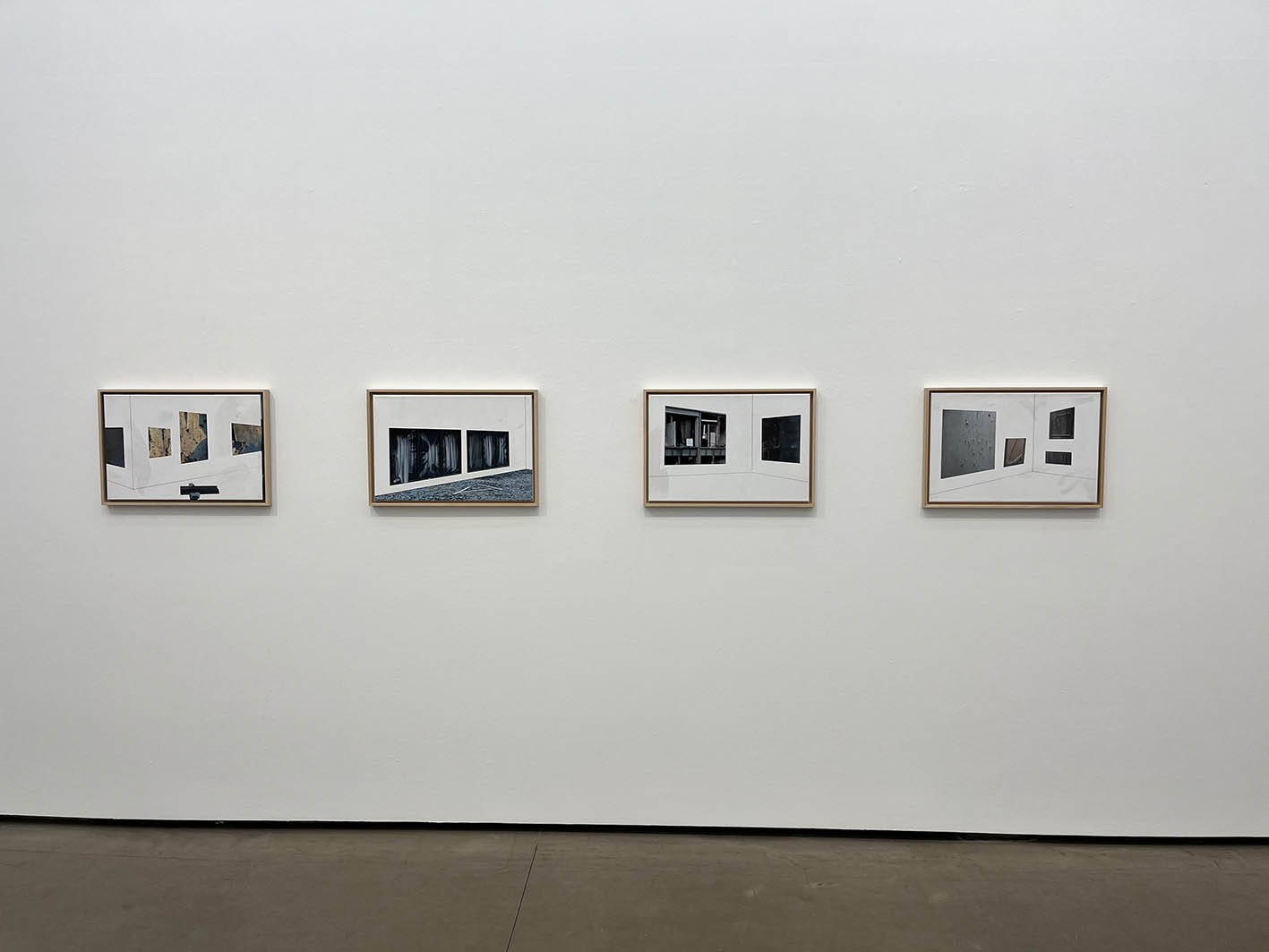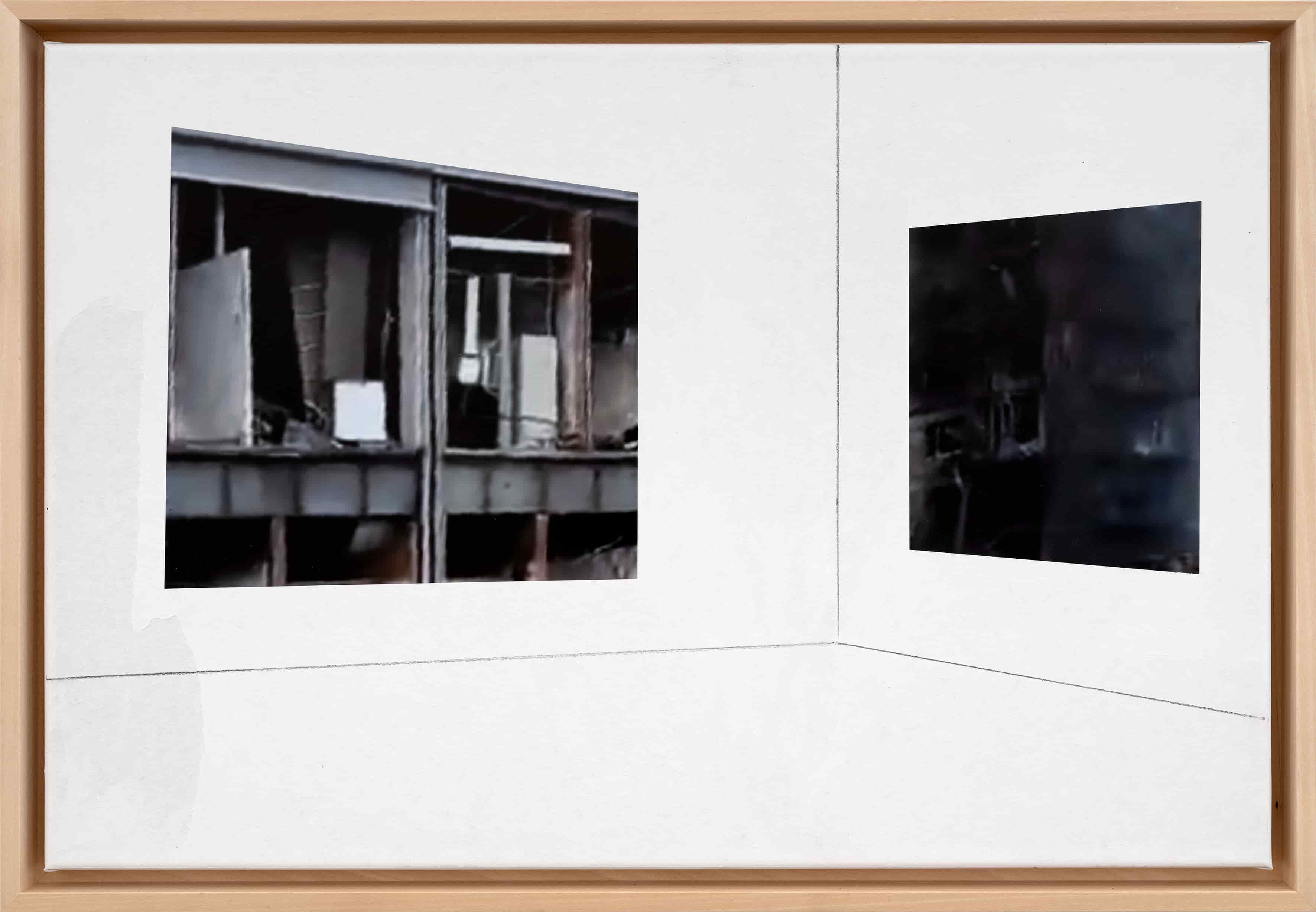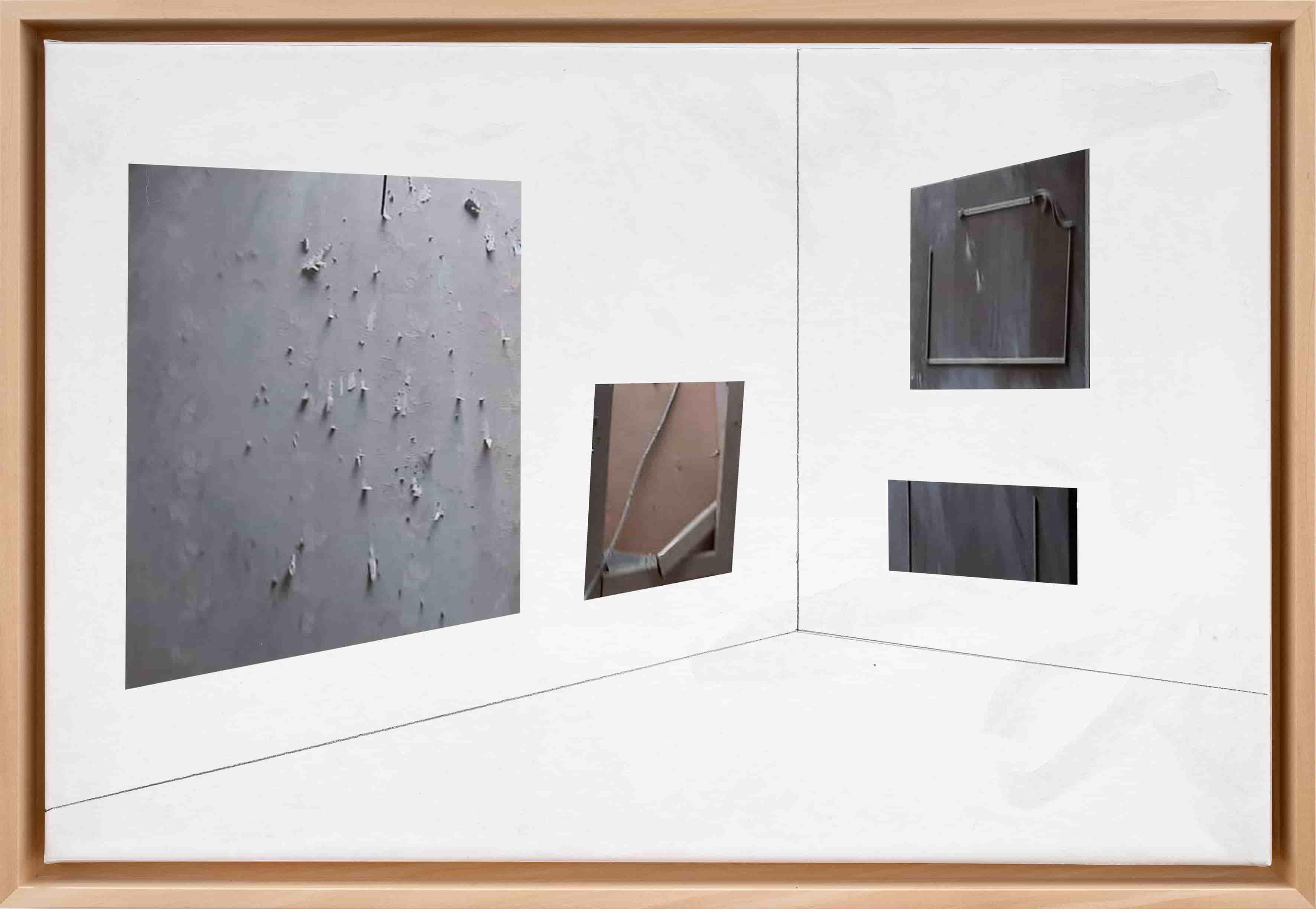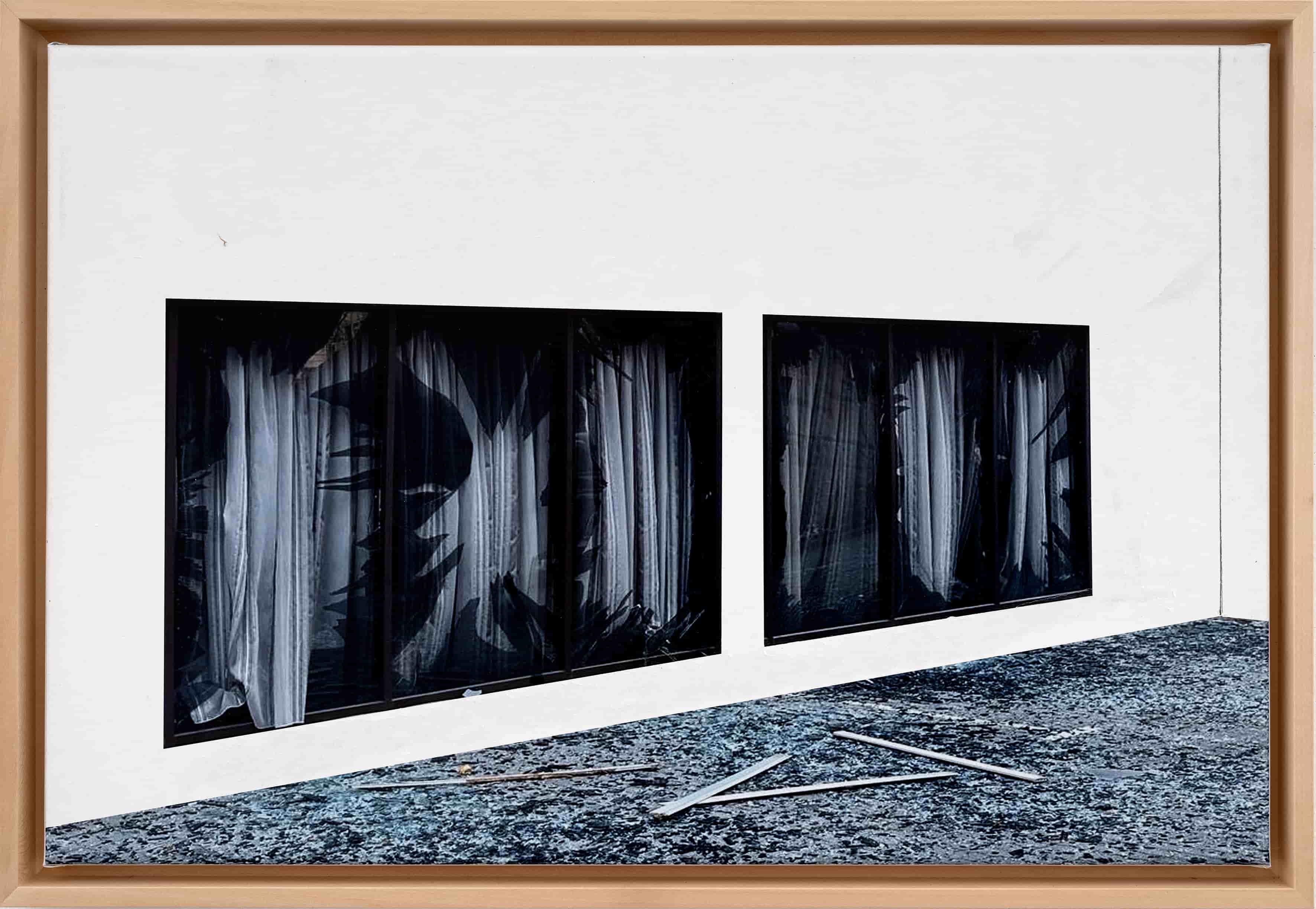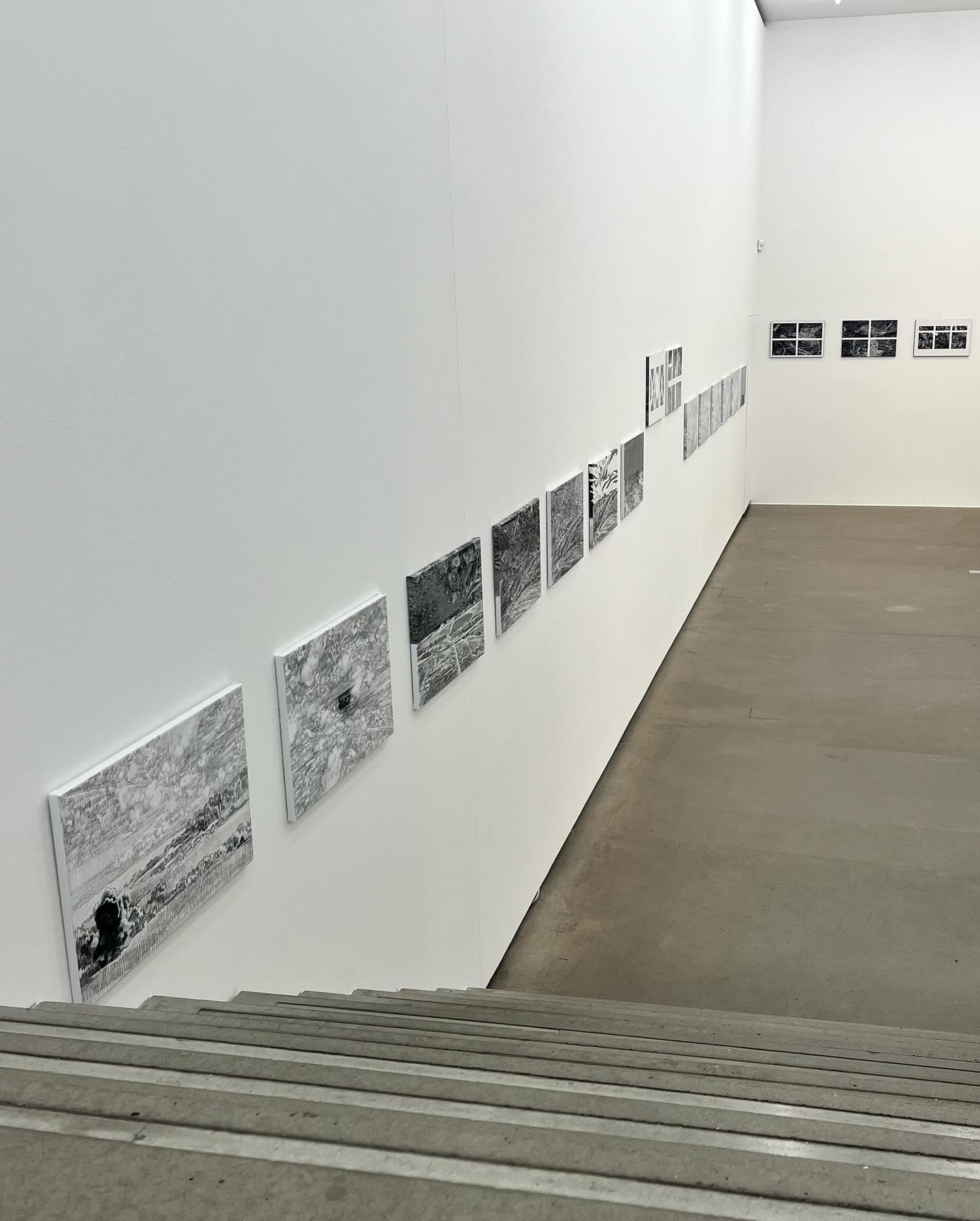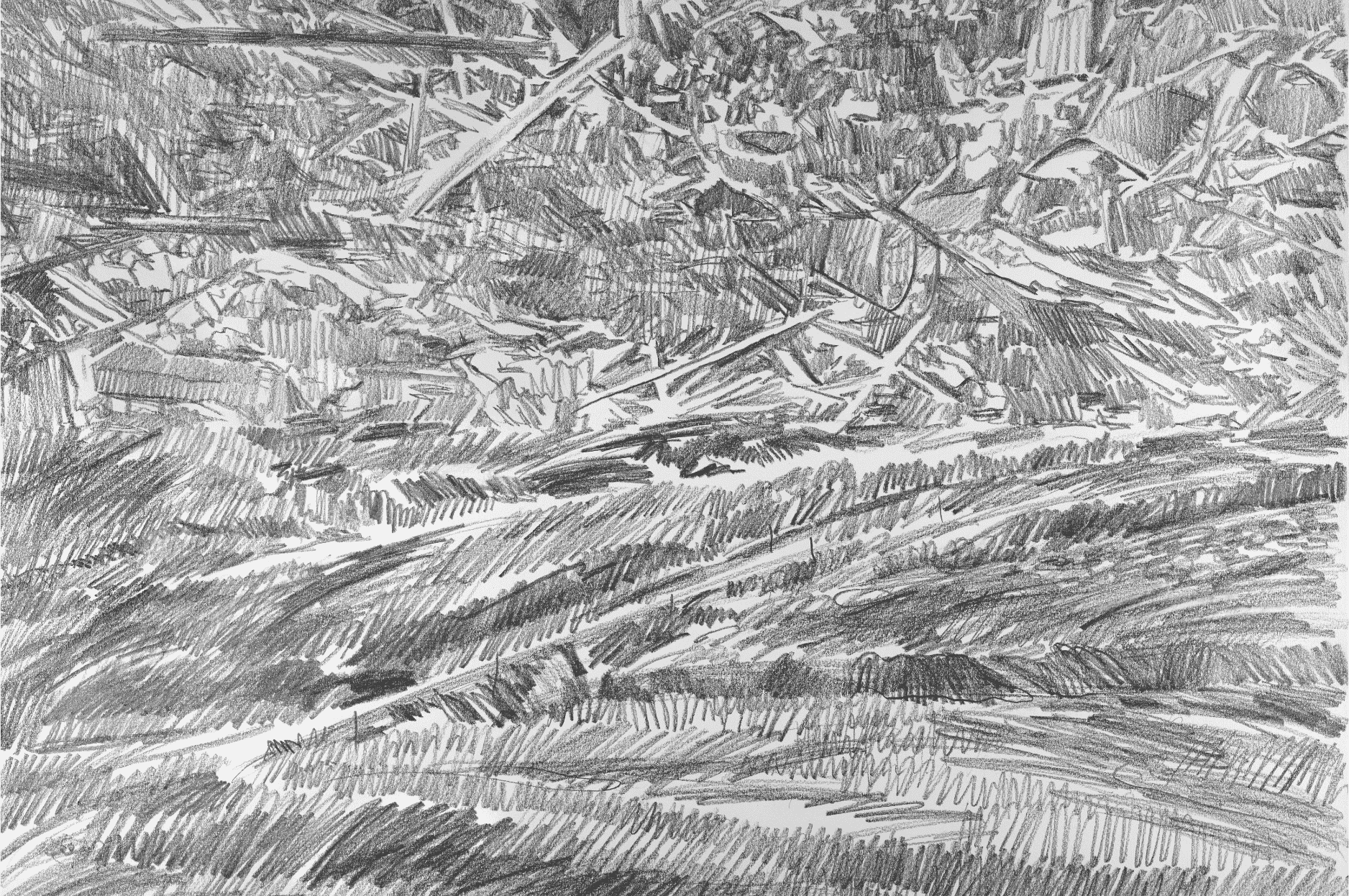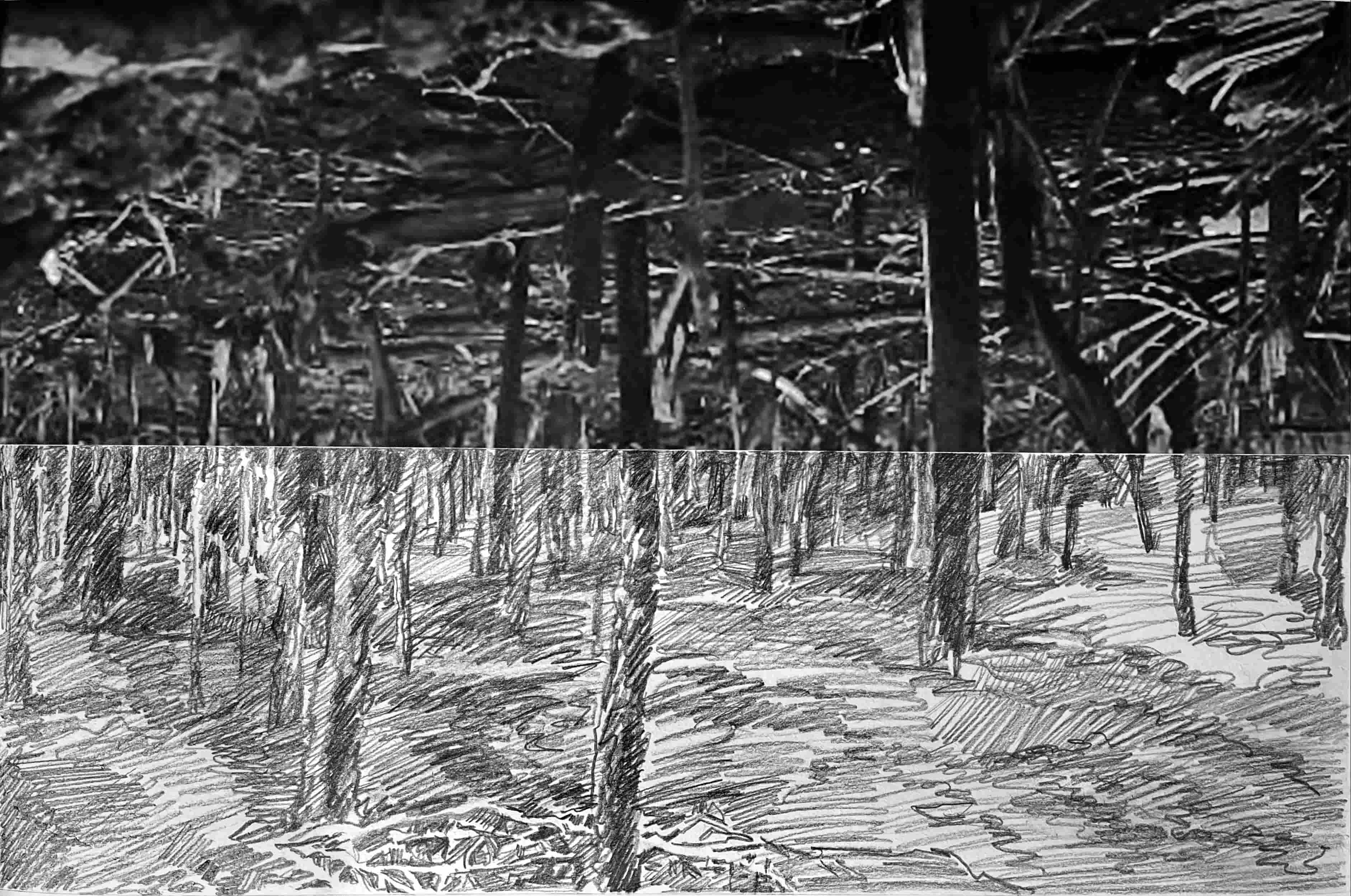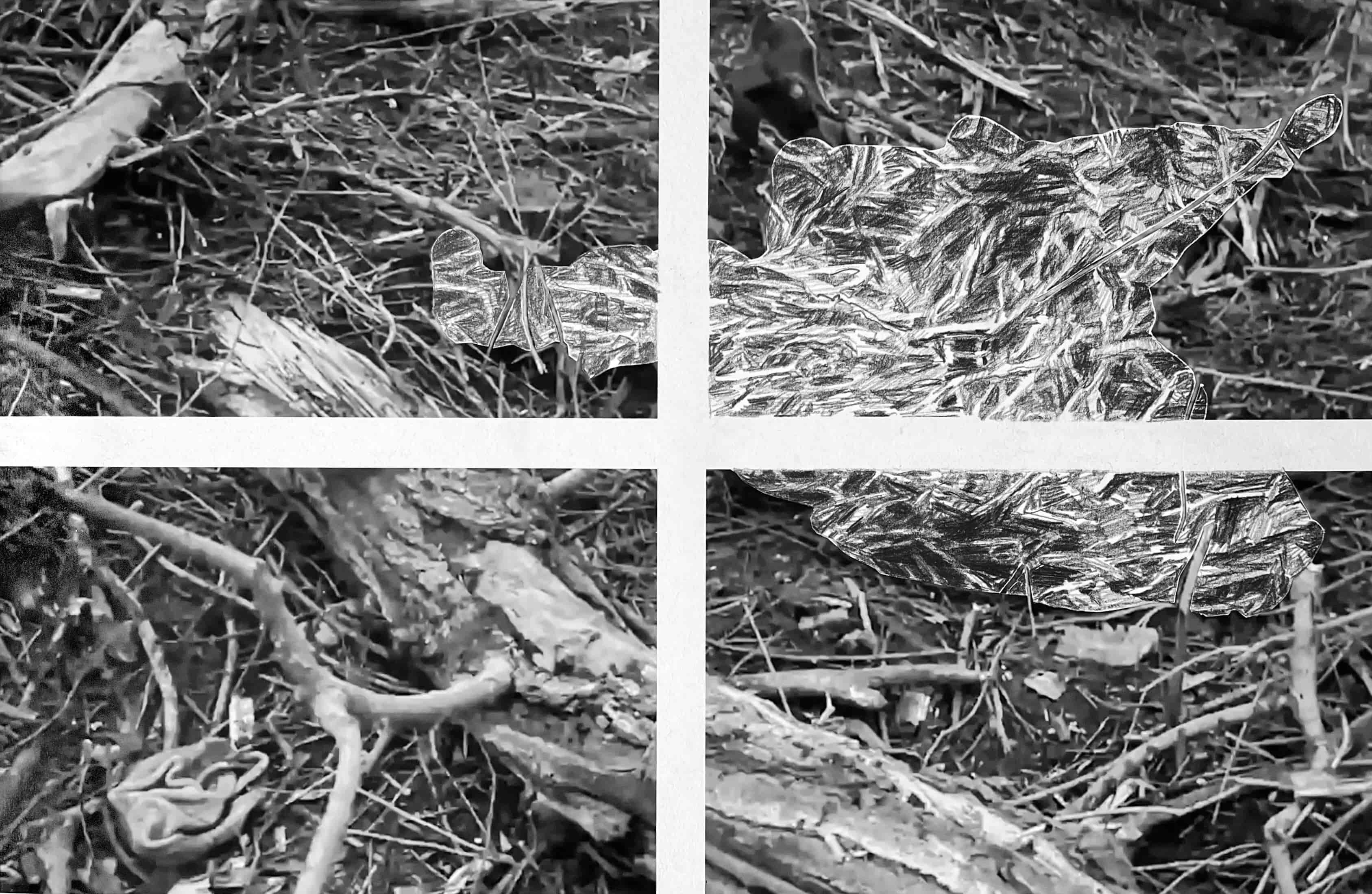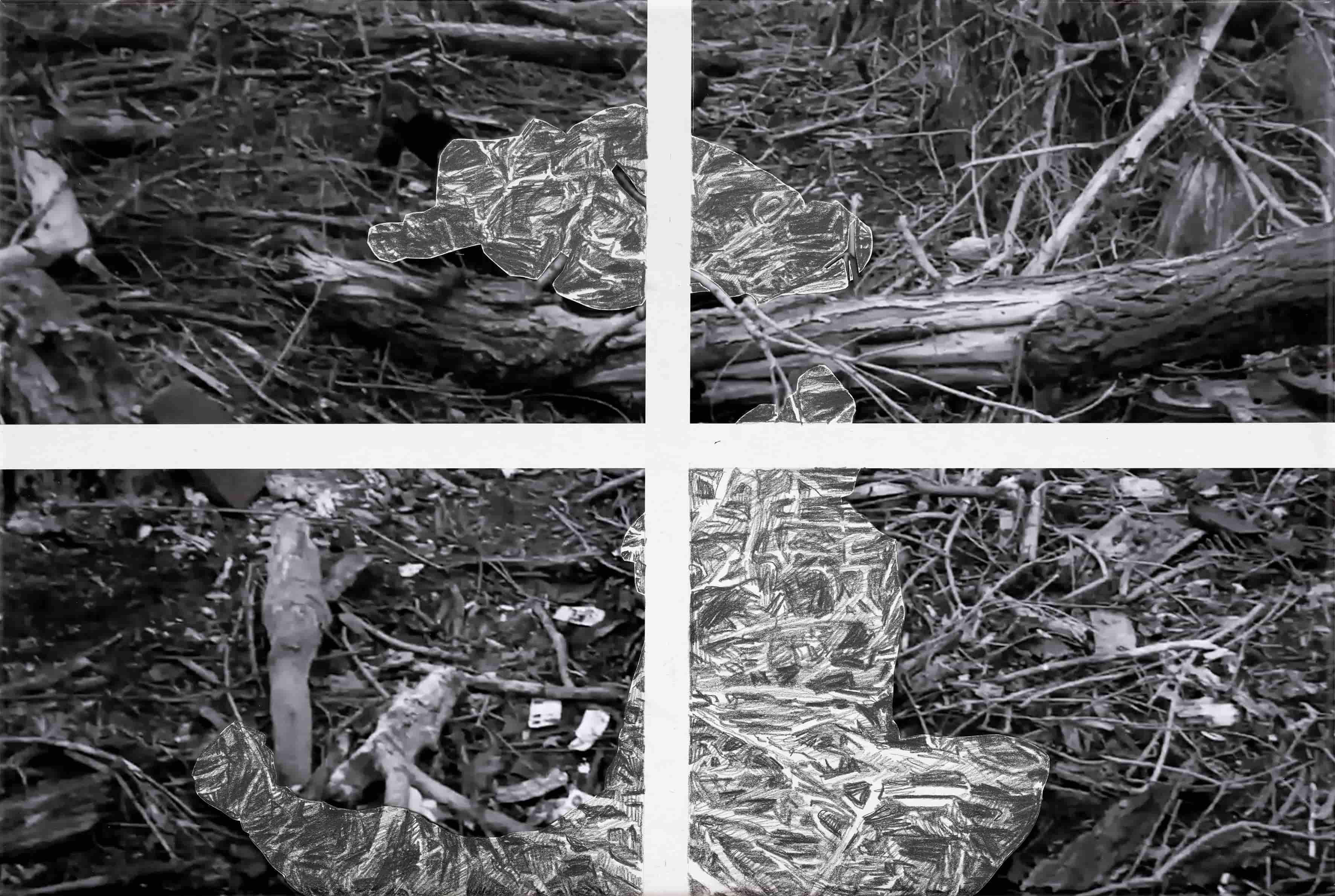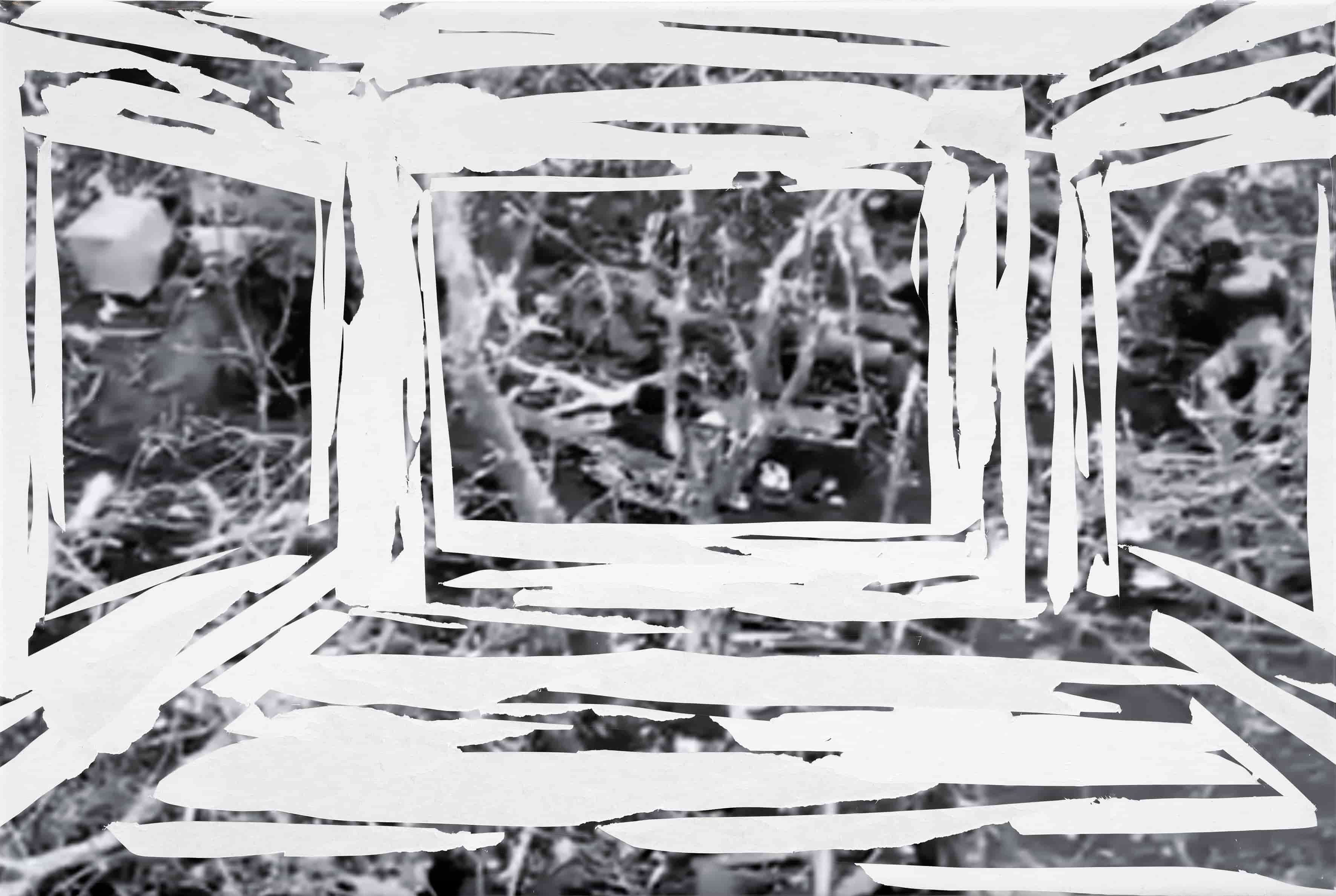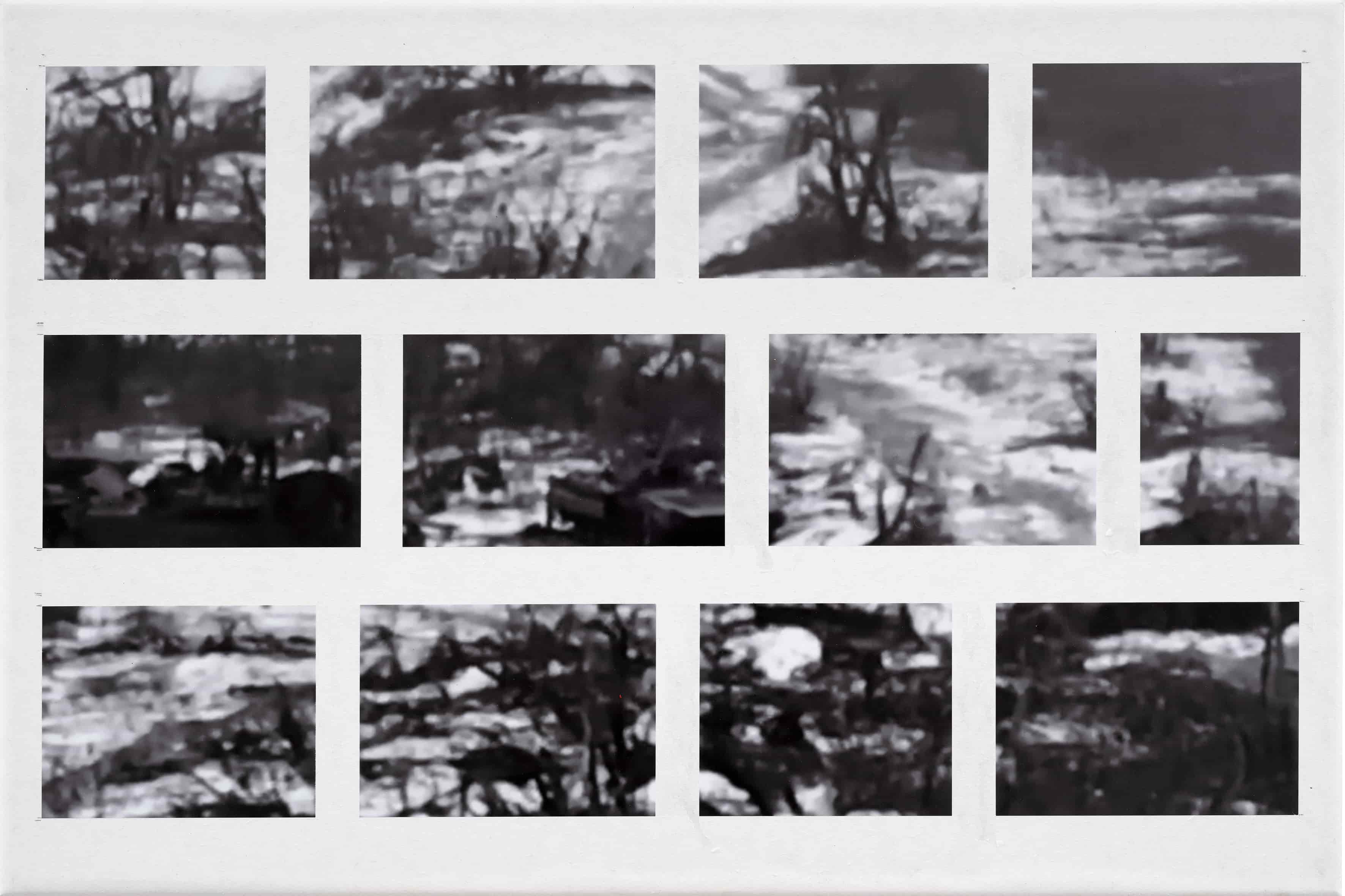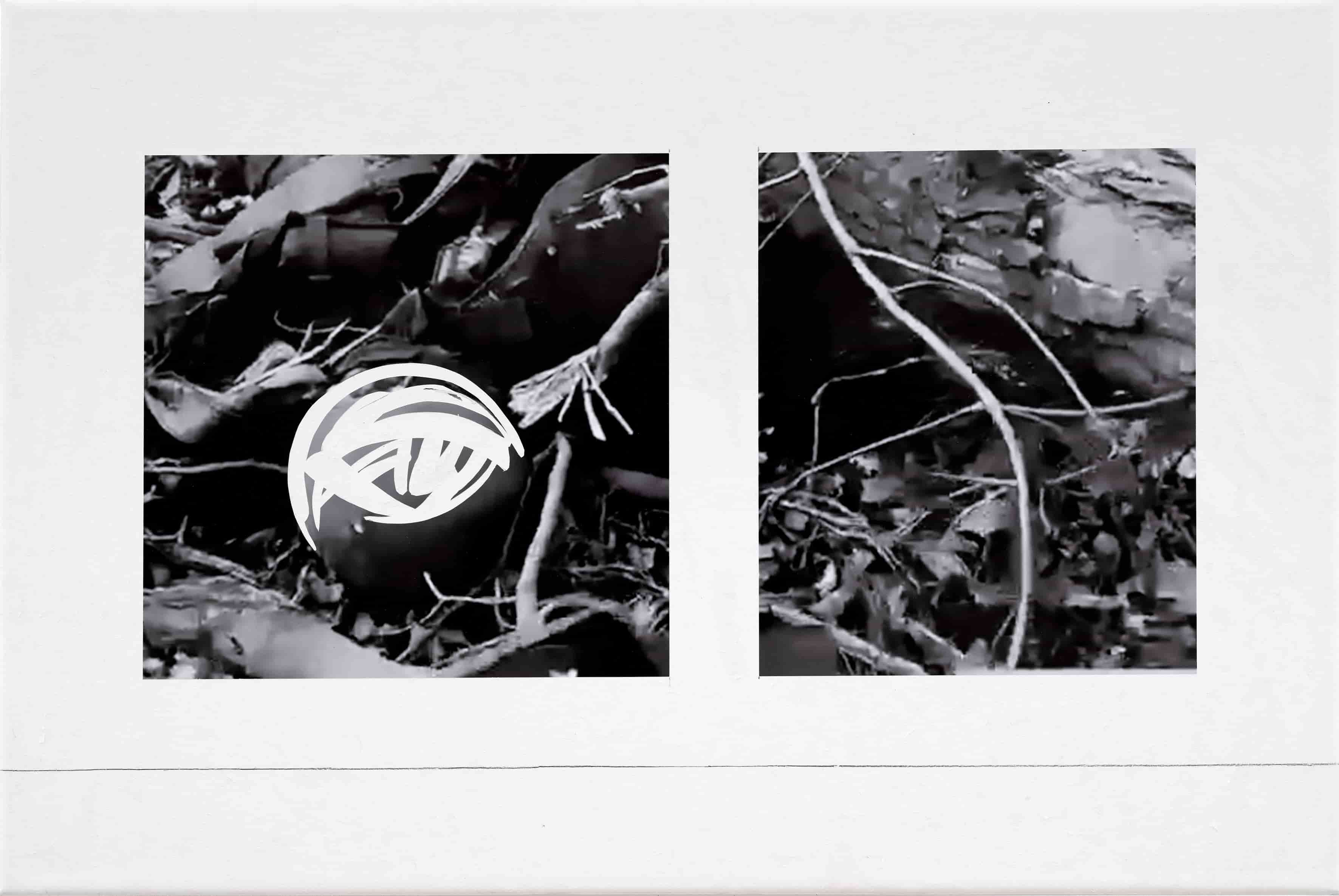Below ground level
Exhibition
Galerie EIGEN + ART Berlin
March 7 – April 20, 2024


In Below Ground Level, Lada Nakonechna questions the appropriate artistic forms through which to represent the present from her viewpoint and position amid the Russian- Ukrainian war. She proposes to go down to the foundations that underpin artistic production and the practice of interpretation in order to investigate the artificial crutches that support our perception and judgment.
Landscape is a significant genre in European art and Nakonechna prefers to decode the determinants of it and its passive role. Her latest artworks are based on online-sourced photographs of anonymous and specific places that bear witness to the destruction, devastation, and war crimes. The sky is the central subject of this landscape. However, the artist invites us to look at a threatened sky, which is completely enclosed by the flat background of other elements of the image with a lack of perspective – unpromising. We also encounter a crisis of perception in the depiction of clouds captured with a perspective from the air. This is not an atmospheric phenomenon. Instead, the curly shapes of clouds in the Ukrainian landscape are formed due to explosions caused by smart bombs.
Lada Nakonechna processes the images in such a way that their this intentional manipulation represent itself: she collages a photograph with her drawing, removing or adding details, redrawing the photographic fragments, and reprinting them digitally. The degree of realism in the drawing either confirms or undermines the realism of the photograph. Artistic mediums interrogate each other for their values and potential to express the authenticity of a fact.
This leads to another question that Nakonechna is trying to address in her artistic practice —our level of reliance on media crutches. The artist’s original reinvented language of a particular war may become vague in stereotypical abstract catastrophe when it is forced into conventional media and institutional frameworks. Understanding this, Nakonechna intentionally imposes certain geometric grids and compositional structures on the images–e.g. a browser window, or the vertical and horizontal preview of search results as they are displayed. The artistic and media methods of framing can manipulate reality by emphasizing or ignoring certain details.
The exhibition space as a picture frame also provides a framework for our perception. It creates a sense of distance and safety, protecting the viewer from images that may be beyond their ability to perceive. The window frame, for instance, metaphorically divides the space into the familiar and the unfamiliar, giving a paradoxical sense of relative safety. Moreover, the exhibition is also a public space that allows us to collectively observe the reality of danger, death, and the outgoing catastrophe, the world with no familiar ground to stand on.
Text by Kateryna Badianova
